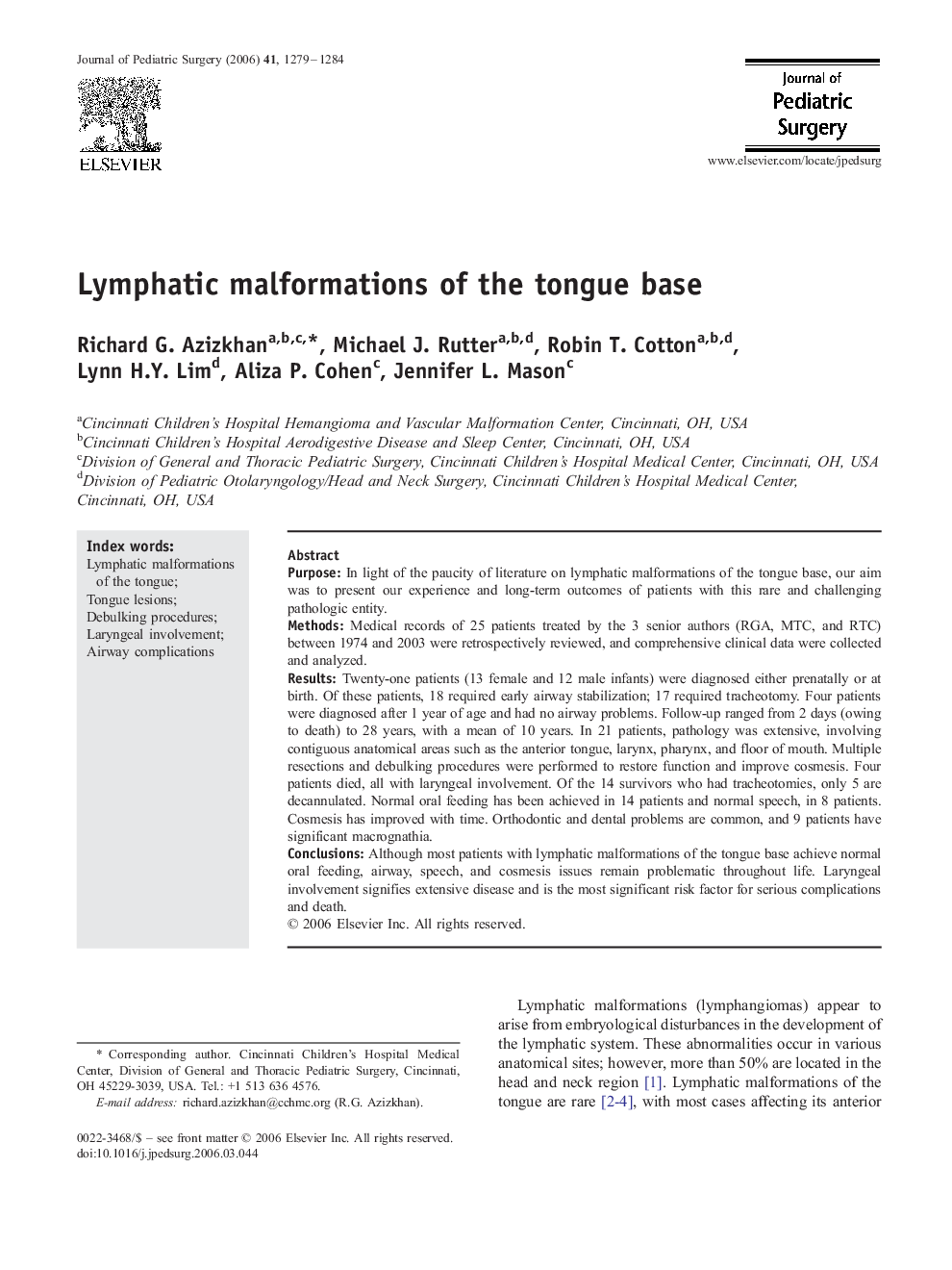| Article ID | Journal | Published Year | Pages | File Type |
|---|---|---|---|---|
| 4160666 | Journal of Pediatric Surgery | 2006 | 6 Pages |
PurposeIn light of the paucity of literature on lymphatic malformations of the tongue base, our aim was to present our experience and long-term outcomes of patients with this rare and challenging pathologic entity.MethodsMedical records of 25 patients treated by the 3 senior authors (RGA, MTC, and RTC) between 1974 and 2003 were retrospectively reviewed, and comprehensive clinical data were collected and analyzed.ResultsTwenty-one patients (13 female and 12 male infants) were diagnosed either prenatally or at birth. Of these patients, 18 required early airway stabilization; 17 required tracheotomy. Four patients were diagnosed after 1 year of age and had no airway problems. Follow-up ranged from 2 days (owing to death) to 28 years, with a mean of 10 years. In 21 patients, pathology was extensive, involving contiguous anatomical areas such as the anterior tongue, larynx, pharynx, and floor of mouth. Multiple resections and debulking procedures were performed to restore function and improve cosmesis. Four patients died, all with laryngeal involvement. Of the 14 survivors who had tracheotomies, only 5 are decannulated. Normal oral feeding has been achieved in 14 patients and normal speech, in 8 patients. Cosmesis has improved with time. Orthodontic and dental problems are common, and 9 patients have significant macrognathia.ConclusionsAlthough most patients with lymphatic malformations of the tongue base achieve normal oral feeding, airway, speech, and cosmesis issues remain problematic throughout life. Laryngeal involvement signifies extensive disease and is the most significant risk factor for serious complications and death.
